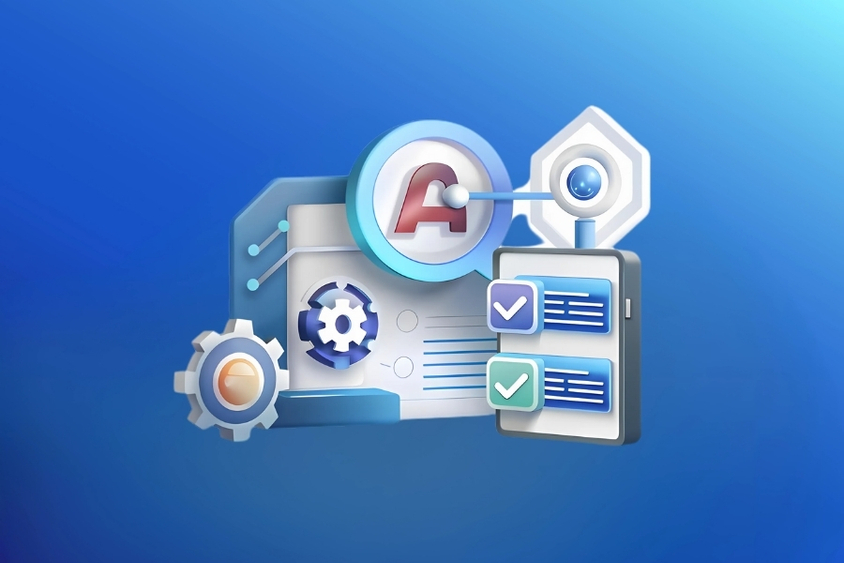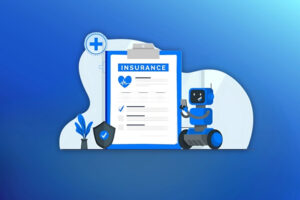Premium audits have long been a source of friction for insurance carriers and policyholders alike—burdened by paperwork, slow cycles, and accuracy issues. Traditionally treated as a compliance checkbox, audits often arrived late, triggered disputes, and exposed insurers to revenue leakage.
Today, this is changing. AI is transforming premium audits from a reactive, manual task into a strategic engine for accuracy, speed, and business insight.
The Manual Past: Inefficiencies by Design
In their traditional form, audits were labor-intensive and fragmented. Auditors gathered payroll records, tax forms, and questionnaires—often in inconsistent formats—and manually entered them into legacy systems. This not only slowed down the audit cycle but also introduced avoidable errors.
These manual processes typically relied on partial data and occurred months after policy inception. This reactive model often failed to detect underreported payroll or job misclassifications—exposing carriers to significant losses. One regional carrier, for example, lost over $200,000 annually due to undetected misclassified job codes—losses only discovered after retrospective reviews. Meanwhile, audit teams faced growing backlogs and burnout.
The AI-Powered Shift: Precision at Every Step
Modern premium audits are defined by integration, intelligence, and automation. Let’s explore how AI is transforming each step of the process:
1. Digitization & Automated Ingestion
The first and most critical step in modernizing premium audits is eliminating paper-based bottlenecks and fragmented data flows. Historically, audit preparation began with a flood of physical documents—PDFs, spreadsheets, tax forms, and handwritten payroll logs—often sent via email or postal mail. These materials arrived in inconsistent formats, lacked version control, and required hours of manual sorting, scanning, and data entry. The result? Delays, confusion, and a growing risk of missing or misinterpreting important data points—especially when audits depended on sample-based rather than complete data capture.
Digitization changes that foundation entirely. By shifting to a centralized audit platform, all incoming materials—regardless of source or format—are funneled into a structured, searchable database. This alone reduces lag time, eliminates duplication, and enables standardized workflows. But the real efficiency gain comes from AI-powered ingestion tools that connect directly with internal and external systems—such as payroll software, HRIS platforms, tax databases, and broker management portals—through secure APIs. These integrations automatically retrieve relevant data in real time, eliminating the need for endless back-and-forth emails and manual uploads between clients, auditors, and carriers.
The business value is tangible. One national insurer who implemented automated ingestion and classification tools reported a 60% reduction in document processing time. This translated into more than just operational savings—it dramatically improved cycle times, enabled more audits to be completed per quarter, and gave underwriters faster access to verified data for pricing and risk management. Clients, too, noticed the difference.
With fewer requests and smoother communication, the client experience improved—reducing audit friction, disputes, and policyholder dissatisfaction. Digitization isn’t just an upgrade—it’s the new baseline for audit efficiency in a digital-first insurance ecosystem.
2. AI-Driven Data Extraction & Validation
Once the audit data is ingested, the next challenge is extracting the right information and validating its accuracy—historically, the most time-consuming part of the process. Audit teams had to manually scan documents line by line to find job classifications, wages, hours worked, and employee names, often buried in complex or inconsistent formats. These manual reviews introduced human error, slowed reviews, and created audit backlogs—especially when documents were scanned copies or contained handwritten notes.
AI transforms this step with Natural Language Processing (NLP), which reads and understands structured and unstructured data across various formats. It can parse employee rosters, tax reports, timecards, and job descriptions—even if the layout or structure changes from one file to the next. Once extracted, these data points are automatically cross-checked against internal policy systems, historical records, and third-party databases. If inconsistencies or omissions are found—such as mismatched job codes or missing payroll categories—AI immediately flags them for review, allowing the team to resolve issues in real-time.
This upgrade has far-reaching consequences for efficiency and accuracy. A third-party administrator who deployed automated extraction and validation saw a 75% drop in missing-data email exchanges, reducing the audit cycle time and freeing staff for deeper analytical work. By minimizing repetitive reviews and eliminating low-value tasks, carriers can reallocate resources to higher-risk audits and complex cases—ultimately improving both audit quality and operational ROI.
3. Proactive Risk Detection with Machine Learning
Historically, premium audits were conducted as backward-looking exercises—often taking place months after policy inception. This meant that errors, misreporting, or misclassifications weren’t discovered until much later, impacting revenue recovery and policyholder satisfaction. Moreover, manual reviews lacked the contextual intelligence to detect hidden risk patterns, leaving underreporting and job code mismatches undetected until renewal time or after disputes.
Machine learning shifts this paradigm by introducing real-time risk modeling into the audit process. By comparing current data with historical patterns, industry benchmarks, and peer group trends, AI identifies red flags that humans may miss—such as sudden shifts in payroll distribution, job role inflation, or contractor misclassification.
These systems score audits based on risk levels, enabling carriers to prioritize high-risk accounts, investigate anomalies earlier, and prevent under-collected premiums before they become losses.This approach yields significant financial results. For instance, when a food processing company underwent a labor restructuring mid-policy, the AI model flagged the shift as an anomaly.
A proactive audit was triggered, resulting in an $89,000 recovery—a correction that would have otherwise gone unnoticed. With AI-enhanced risk detection, premium audits evolve from a reactive safeguard into a proactive defense mechanism—protecting carrier margins while upholding underwriting discipline.
4. Real-Time Premium Calculation & Integration
Even when audits are completed on time, delays often arise in the final steps—calculating premiums, applying the right modifiers, and reconciling changes across internal systems. In traditional workflows, auditors must manually calculate premiums using spreadsheets, then communicate findings to billing and broker teams. This introduces lag, confusion, and the risk of discrepancies between what the auditor finds and what the client sees on their invoice.
AI eliminates these inefficiencies by directly feeding validated audit data into premium calculation engines. The system applies correct rates, job classifications, state-specific modifiers, and endorsements—instantly generating accurate premium values. Because the platform is integrated with downstream systems like billing, CRM, and broker portals, these updates sync in real time, reducing data silos and ensuring every stakeholder—from underwriters to brokers—has access to the same, up-to-date information.
One insurer who implemented real-time premium calculation saw an 85% reduction in reconciliation delays, allowing them to issue faster renewals and improve cash flow. For clients, it meant fewer surprises and more trust in the audit process. For carriers, it meant better coordination between departments, shorter revenue realization cycles, and higher audit-to-bill conversion rates. Real-time integration is more than a tech upgrade—it’s a revenue enabler.
5. Transparent, AI-Generated Reporting
Even when audits are correct, if they’re not communicated clearly, they can cause friction. Policyholders often struggle to understand audit outcomes—especially when premium adjustments are not explained in plain language. This leads to confusion, disputes, and time-consuming back-and-forth between brokers, clients, and audit teams. Internally, teams also spend significant time preparing custom summaries or trying to justify changes post-facto.
Enter Natural Language Generation (NLG). This AI capability takes raw audit data and translates it into clear, human-readable summaries that explain what changed, why it changed, and what it means for the client. Combined with interactive dashboards, these reports visualize changes in job classifications, payroll breakdowns, and premium adjustments—making it easy for both internal and external stakeholders to grasp complex data at a glance.
The benefit is both reputational and operational. Brokers can now explain audit outcomes with greater confidence, reducing disputes and building stronger client relationships. Internal teams, meanwhile, spend less time crafting bespoke narratives and more time focusing on high-impact analysis. The result? Faster closure, improved trust, and a brand reputation built on transparency and precision.
6. Continuous Learning & Compliance Assurance
Unlike traditional audit systems, which operate in static cycles, AI-powered platforms are designed to learn and evolve. As new information becomes available—seasonal hiring shifts, contractor additions, changes in job classifications—AI systems adjust in real-time. This ensures that audits remain aligned with current policy conditions, not just historical assumptions. It also allows carriers to respond to operational changes faster, keeping premium accuracy intact.
Feedback loops are essential to this system. As auditors flag corrections or identify edge cases, the AI models are retrained with each cycle. This continuous learning improves anomaly detection, reduces false positives, and increases the system’s overall audit accuracy over time. In parallel, built-in audit trails and automated regulation checks ensure that all processes meet state and federal compliance standards—critical in an era of tightening insurance oversight.
For carriers, this means audit readiness at all times—not just at year-end. Regulators gain confidence from robust, traceable systems. Clients appreciate timely adjustments and fewer surprises. And audit teams are no longer working against the clock, but with real-time insights that adapt to every policy’s lifecycle. AI doesn’t just modernize the audit—it hardens it against compliance risk while enabling continuous operational growth.
From Bottleneck to Business Advantage
AI isn’t just optimizing premium audits—it’s redefining them. What was once a compliance burden is now a strategic opportunity to improve accuracy, capture lost revenue, and deliver a better experience for policyholders and brokers alike.
Carriers see faster, more precise audits. Audit teams shift from manual data entry to risk-focused analysis. Policyholders gain transparency. And the business reaps measurable improvements in revenue, efficiency, and trust.
Final Takeaway:
Premium audits, once viewed as an operational afterthought, are becoming a competitive advantage. With AI, insurers gain a faster path to revenue recognition, fewer disputes, and smarter resource allocation. This is more than transformation—it’s a business imperative.
Ready to modernize your audit process?
Gain control. Drive revenue. Build trust—powered by AI.







